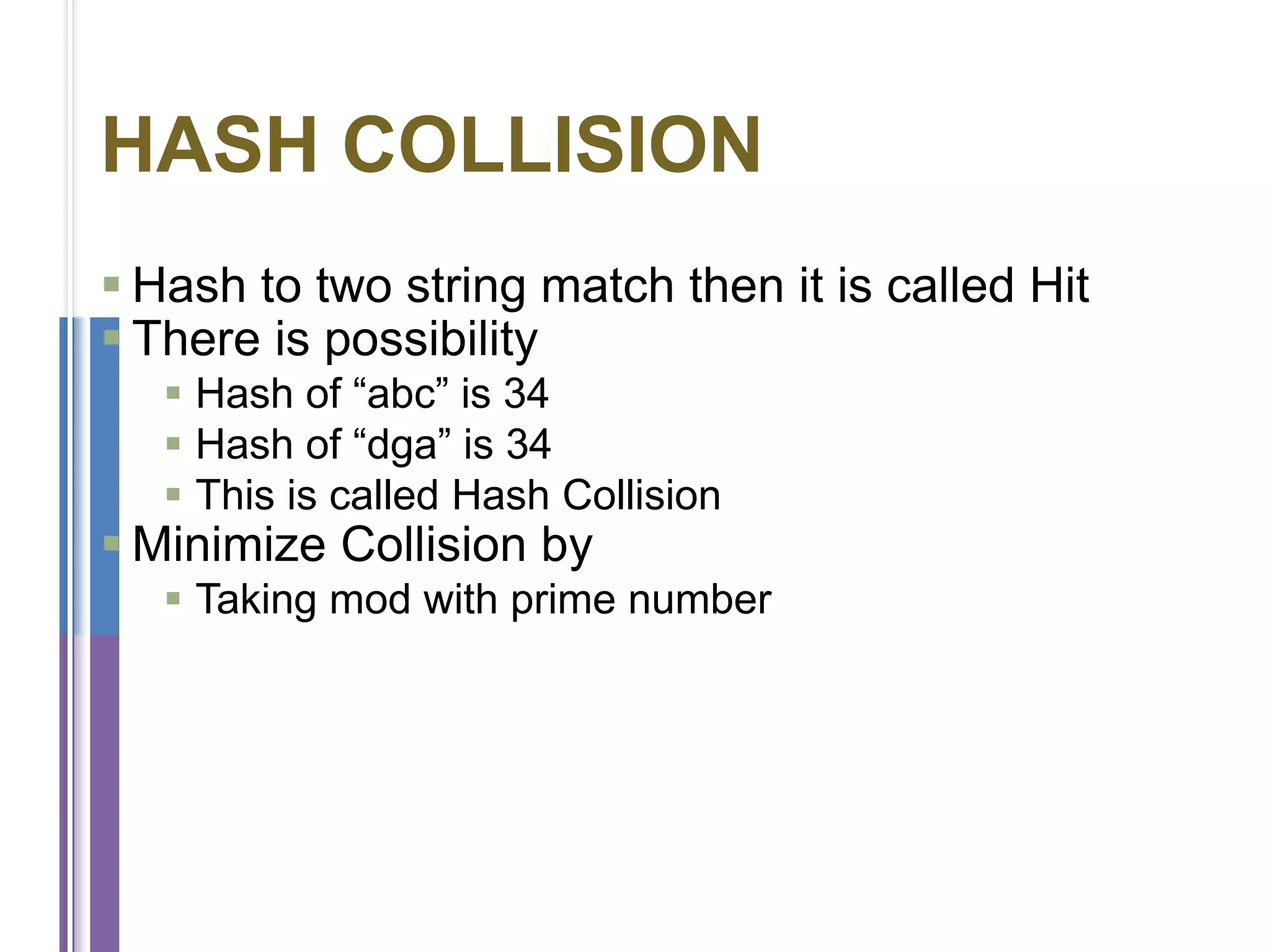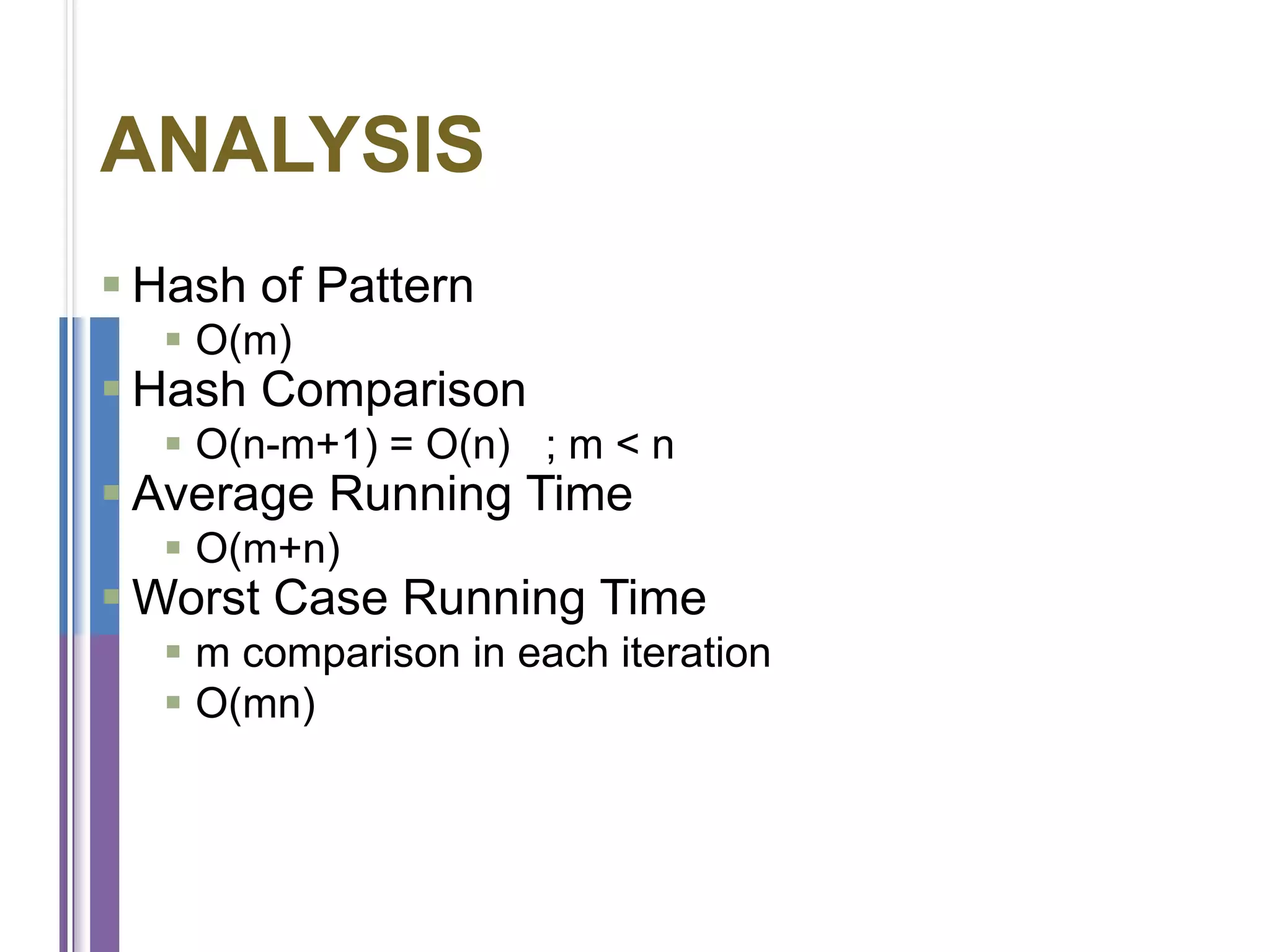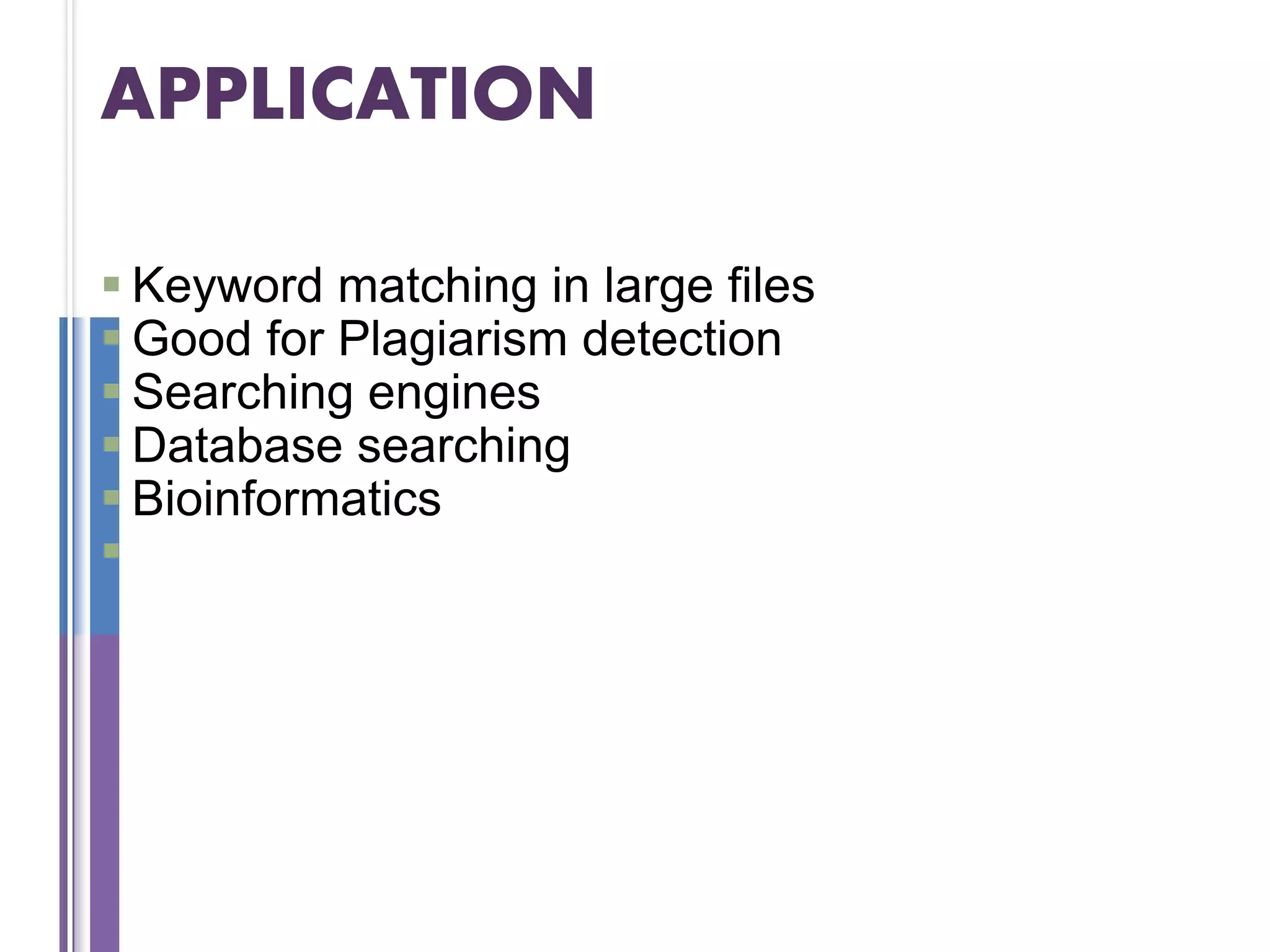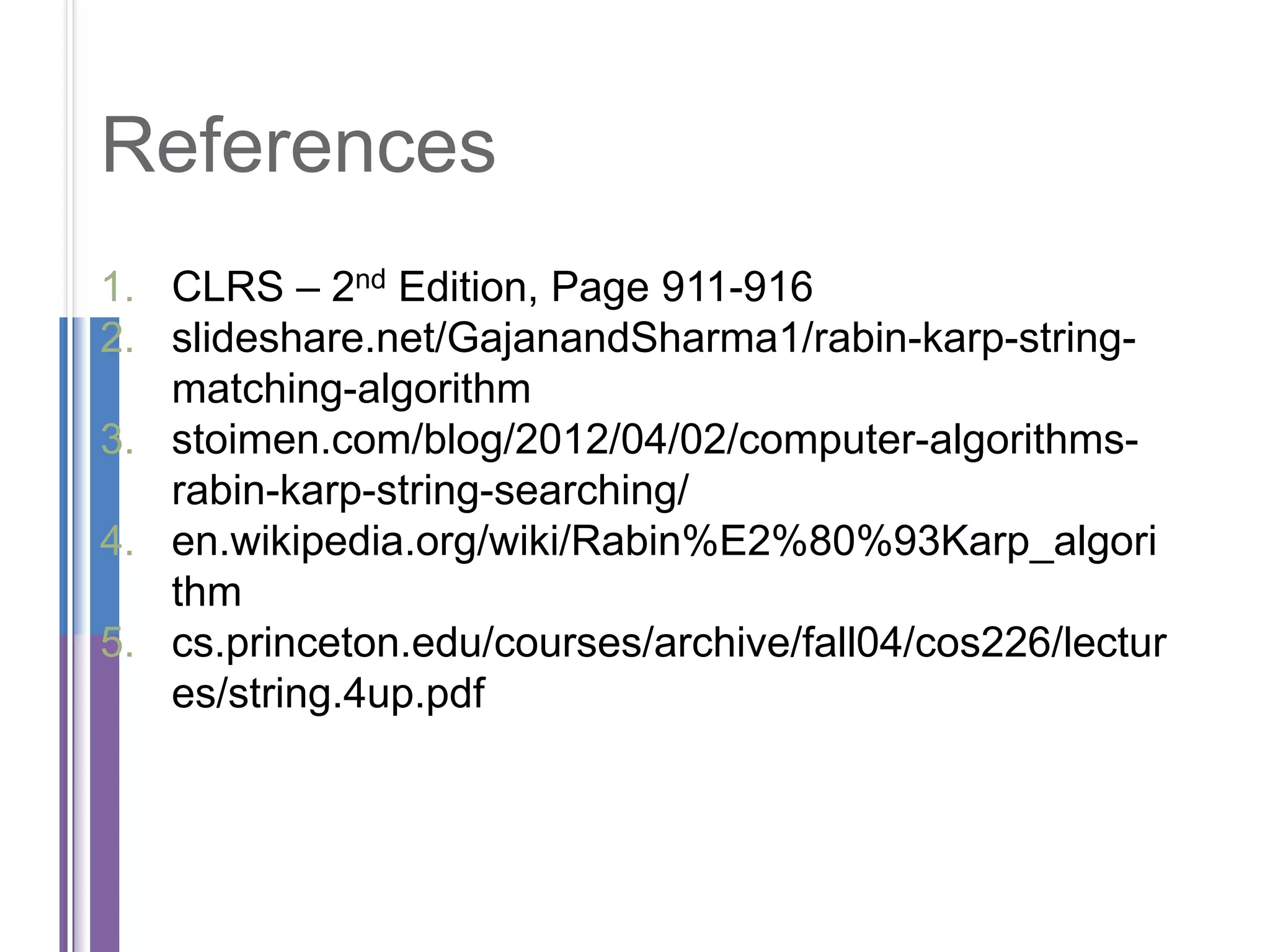The document presents the Rabin-Karp string matching algorithm, which uses hash values for efficiently finding a pattern within a text string. It describes how the algorithm computes hash values for text subsequences and compares them to the pattern, resorting to a brute force method only when hashes match. Applications of the algorithm include keyword matching in large files, plagiarism detection, database searching, and bioinformatics.
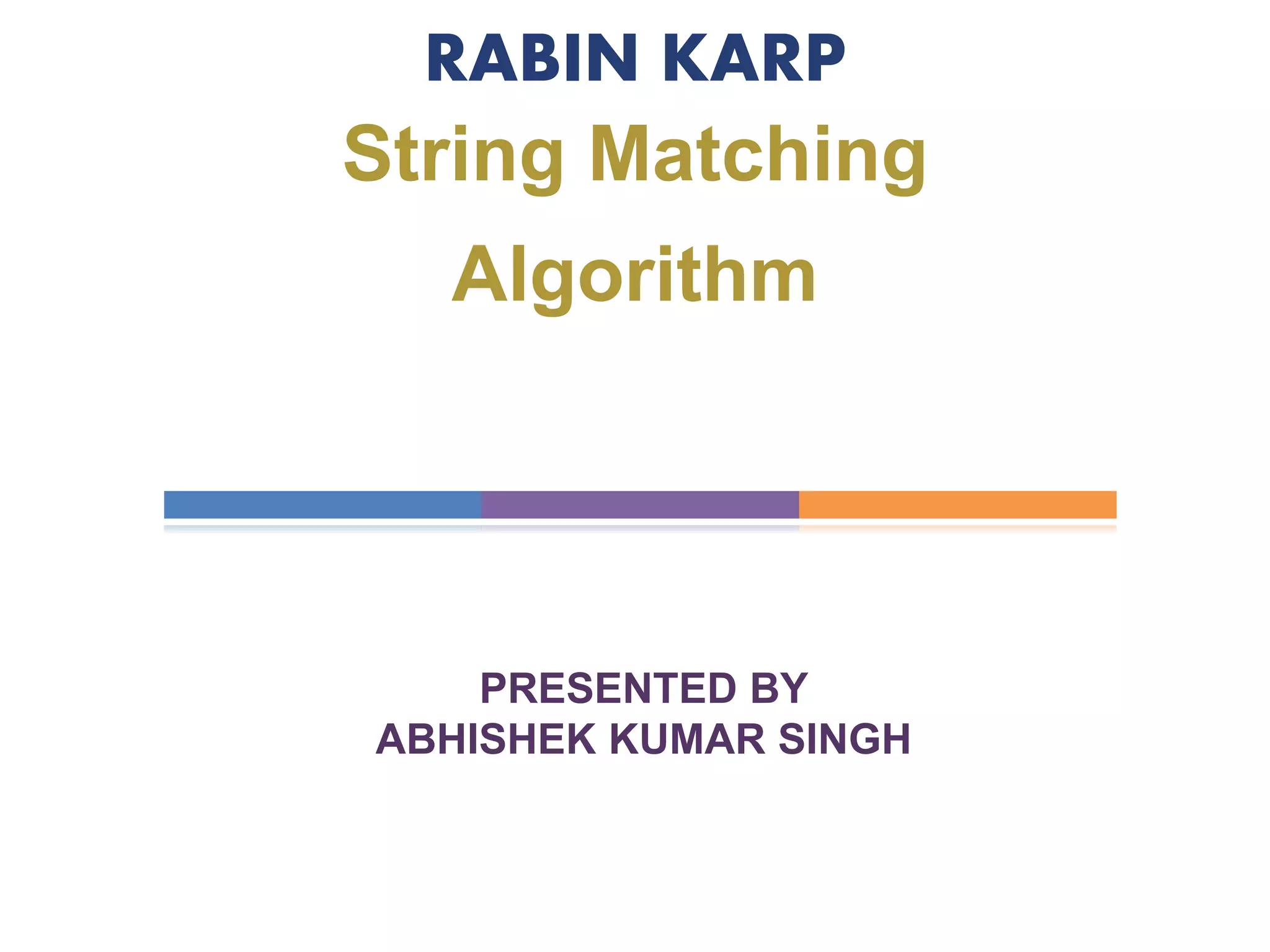
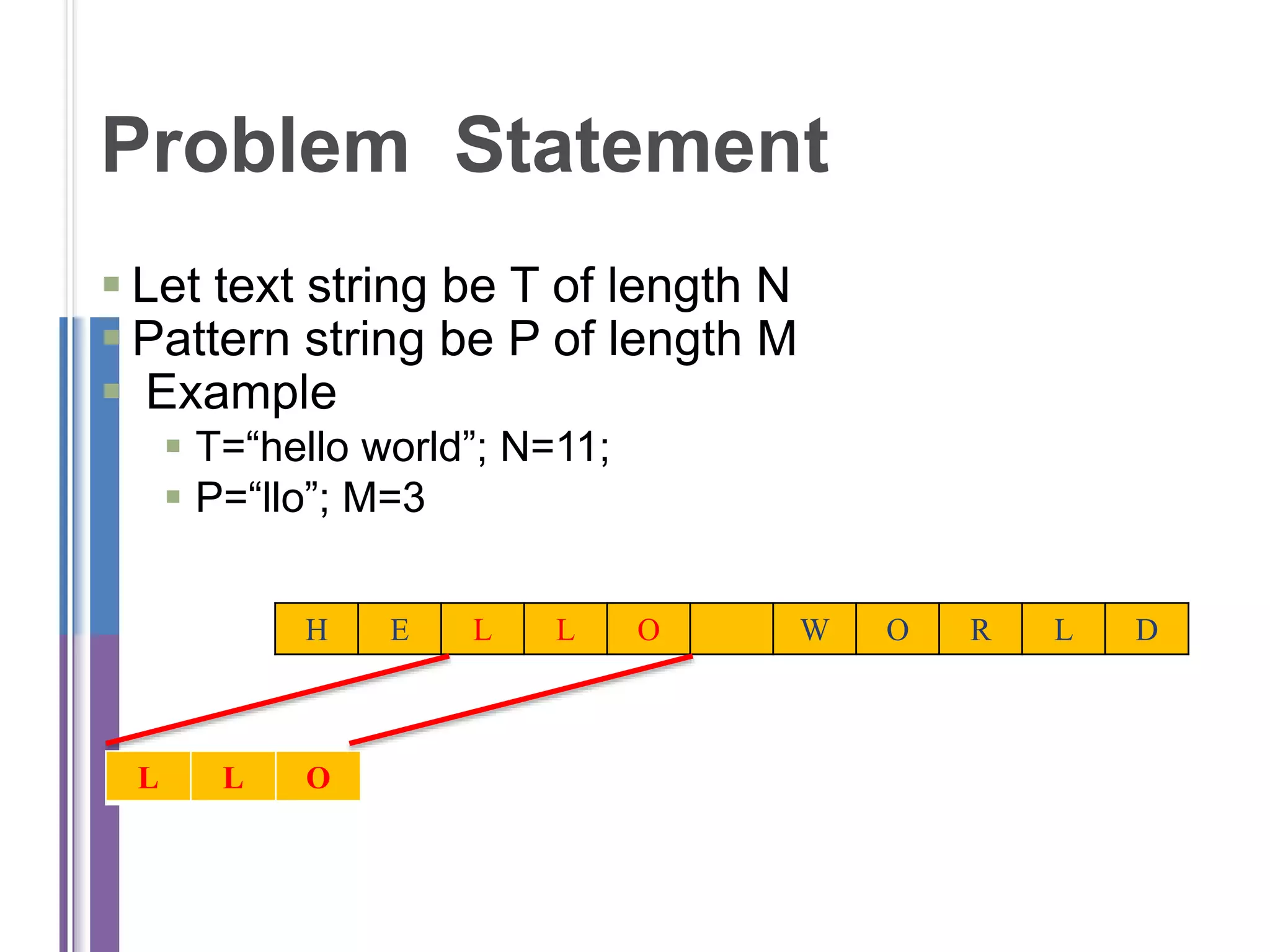
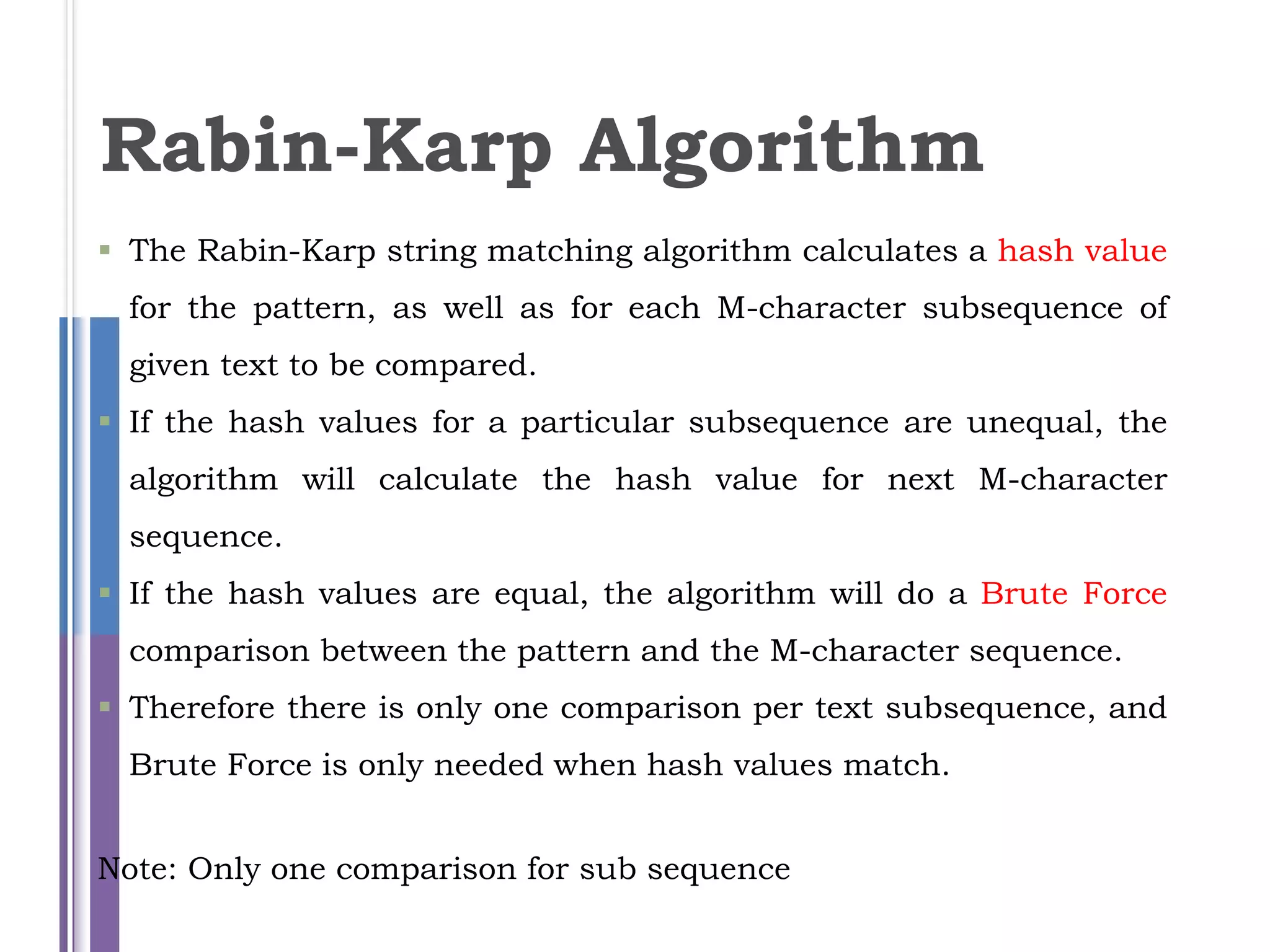
![ Consider an M-character sequence as an M-
digit number in the alphabet. The text
subsequence t[I ... i+M-1] is mapped to the
number
x(i) = t[i]*3^0+ t[i+1]*b^1+...+ t[i+M-1]*3^(M-
1)
Furthermore, given x(i) we can compute x(i+1)
for the next subsequence t[i+1 .. i+M] in
constant time,as follows:
x(i+1) = (x(i)-(t[i]))/3+(3^(M-1))*t[i+M-1]
Rolling Hash Function](https://image.slidesharecdn.com/rabinkarp-170709191755/75/RABIN-KARP-ALGORITHM-STRING-MATCHING-4-2048.jpg)

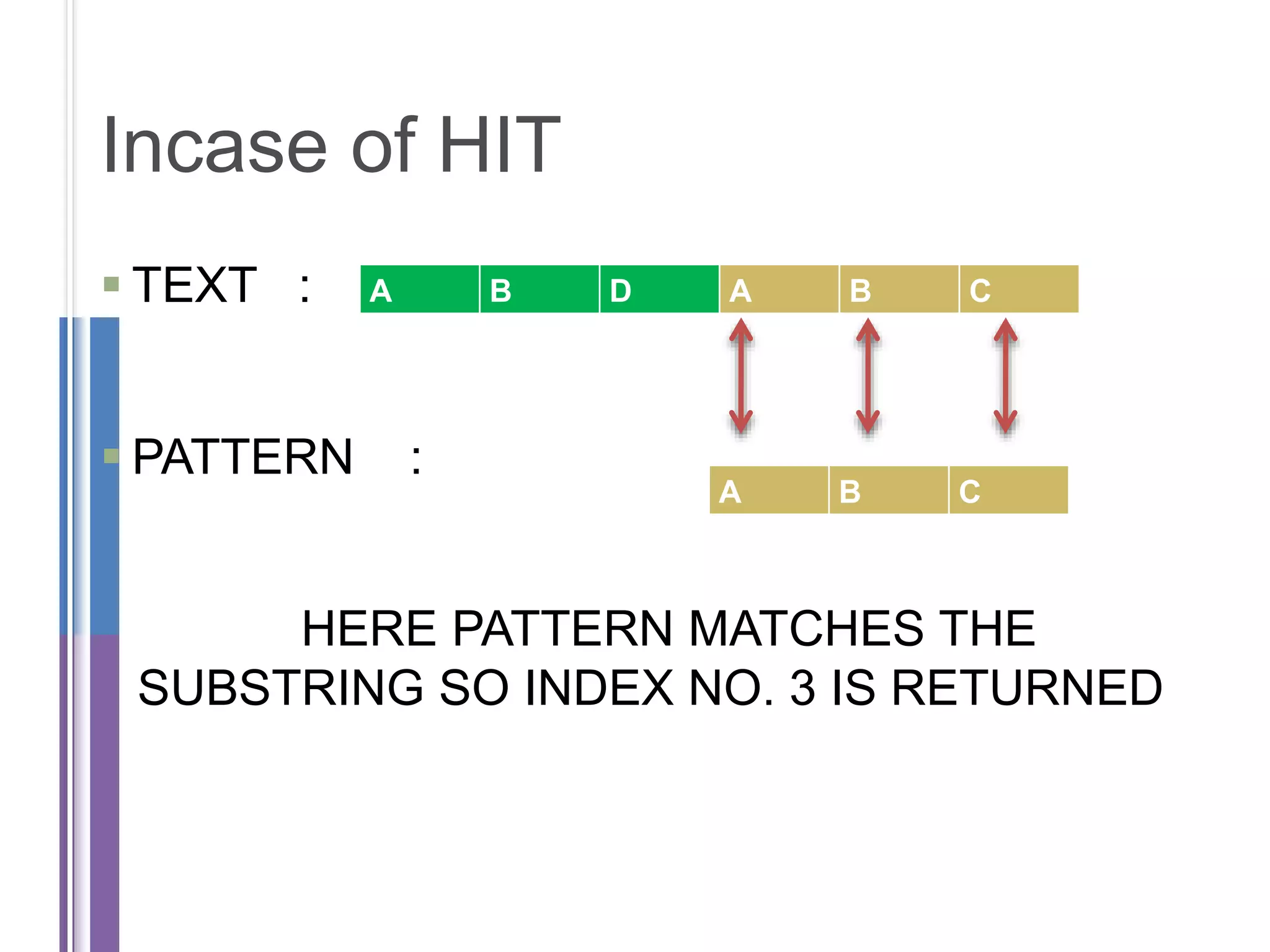
![int main()
{
string s1,s2;
cin>>s1>>s2;
int
l1=s1.size(),l2=s2.size(),
i,j,k;
int hs1=0,p=0,ar[l1];
for(i=0;i<l2;i++)
hs1+=(int)s2[i]*pow(3,i);
int hs2=0;
for(i=0;i<l1;i++)
{
if(i==0)
int c=0;
if(hs2==hs1)
{
for(j=i;j<i+l2;j++)
if(s1[j]==s2[j-
i])
c++;
else
break;
}
if(c==l2)
ar[p++]=i;
}
cout<<l1<<endl;
cout<<"Stored index](https://image.slidesharecdn.com/rabinkarp-170709191755/75/RABIN-KARP-ALGORITHM-STRING-MATCHING-7-2048.jpg)
